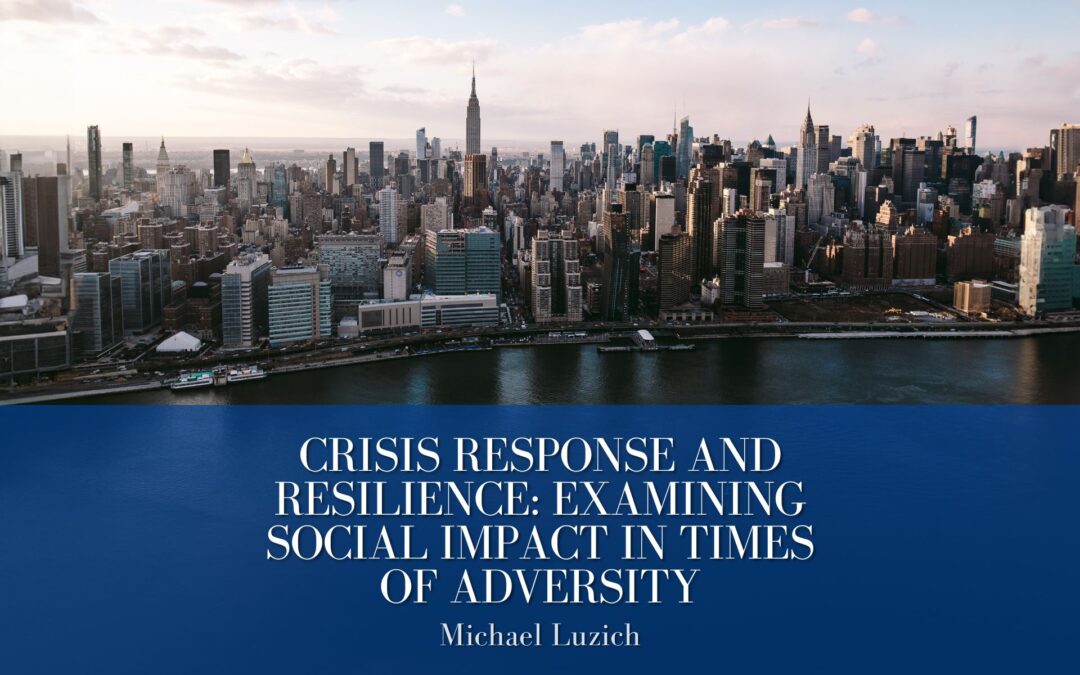In a world that often throws unexpected challenges our way, the importance of crisis response and resilience cannot be overstated. From natural disasters and public health emergencies to economic downturns and social unrest, societies are constantly put to the test. How a society responds to these crises and its ability to bounce back, adapt, and foster positive change, reflect its level of social impact. Take a deeper look into the intertwined concepts of crisis response, resilience, and social impact, exploring their significance and highlighting real-world examples.
Understanding Crisis Response and Resilience
Crisis response involves a society’s immediate actions to mitigate the negative consequences of an adverse event. It encompasses swift decision-making, resource allocation, and coordination among various stakeholders, including governments, non-profit organizations, businesses, and individuals. Well-coordinated crisis response can save lives, minimize damage, and lay the foundation for recovery.
Resilience, on the other hand, refers to a society’s capacity to absorb shocks, adapt to new circumstances, and continue functioning effectively. Resilient communities possess strong social networks, flexible institutions, and the ability to learn from past experiences. Resilience is not just about “bouncing back” but also about “bouncing forward,” using crises as catalysts for positive change.
The Role of Social Impact in Crisis Response and Resilience
Social impact lies at the heart of crisis response and resilience. It encompasses the positive changes that arise from a society’s actions during and after a crisis. When a community comes together to support those in need, create innovative solutions, and enact systemic change, its social impact is profound.
Consider the global response to the COVID-19 pandemic. Countries worldwide implemented lockdowns and travel restrictions to curb the virus’s spread, with governments and citizens stepping up to provide medical supplies, emotional support, and financial aid to those affected. These efforts not only saved lives but also showcased the power of collective action and solidarity.
Examining Real-World Examples
1. Natural Disasters: In the aftermath of Hurricane Katrina in 2005, New Orleans faced immense devastation. However, the disaster prompted a wave of community-driven initiatives, rebuilding efforts, and discussions about improving infrastructure and disaster response systems. The disaster highlighted the importance of addressing societal inequalities and the need for better preparedness.
2. Economic Crises: During the 2008 global financial crisis, organizations like Kiva leveraged their platforms to provide microloans to struggling entrepreneurs in developing countries. This approach empowered individuals to weather the economic storm and fostered sustainable development, showcasing the potential of social impact-driven solutions in times of adversity.
3. Social Unrest: The Black Lives Matter movement emerged as a powerful response to racial injustice and police brutality. Millions of individuals around the world rallied for change, highlighting the social impact of collective action. The movement led to renewed conversations about systemic racism, police reform, and the importance of inclusive societies.
Crisis response and resilience are essential aspects of society’s ability to navigate challenges and drive positive change. By examining the social impact of our actions during times of adversity, we can gauge the effectiveness of our responses and identify areas for improvement. As we continue to face uncertain times, fostering a culture of collective action, innovation, and empathy will undoubtedly shape a more resilient and impactful world.

